The perks of escaping the hustle and bustle of city life include the opportunity to connect with nature — and that extends far beyond walking among the trees and smelling the flowers; it means the chance to see wildlife in their natural habitat. In Suwannee County, one can expect to encounter a variety of birds, fish, and turtles, as well as larger animals like deer, otters, and manatees.
Florida’s Wildlife in Suwannee County
Balancing wooded areas with lush foliage, springs, and rivers creates diverse habitats that support a wide variety of wildlife. Whether you’re looking to spot deer or owls among the trees, or wading birds and turtles near the water, the rich landscape offers abundant opportunities to discover wildlife.
Manatees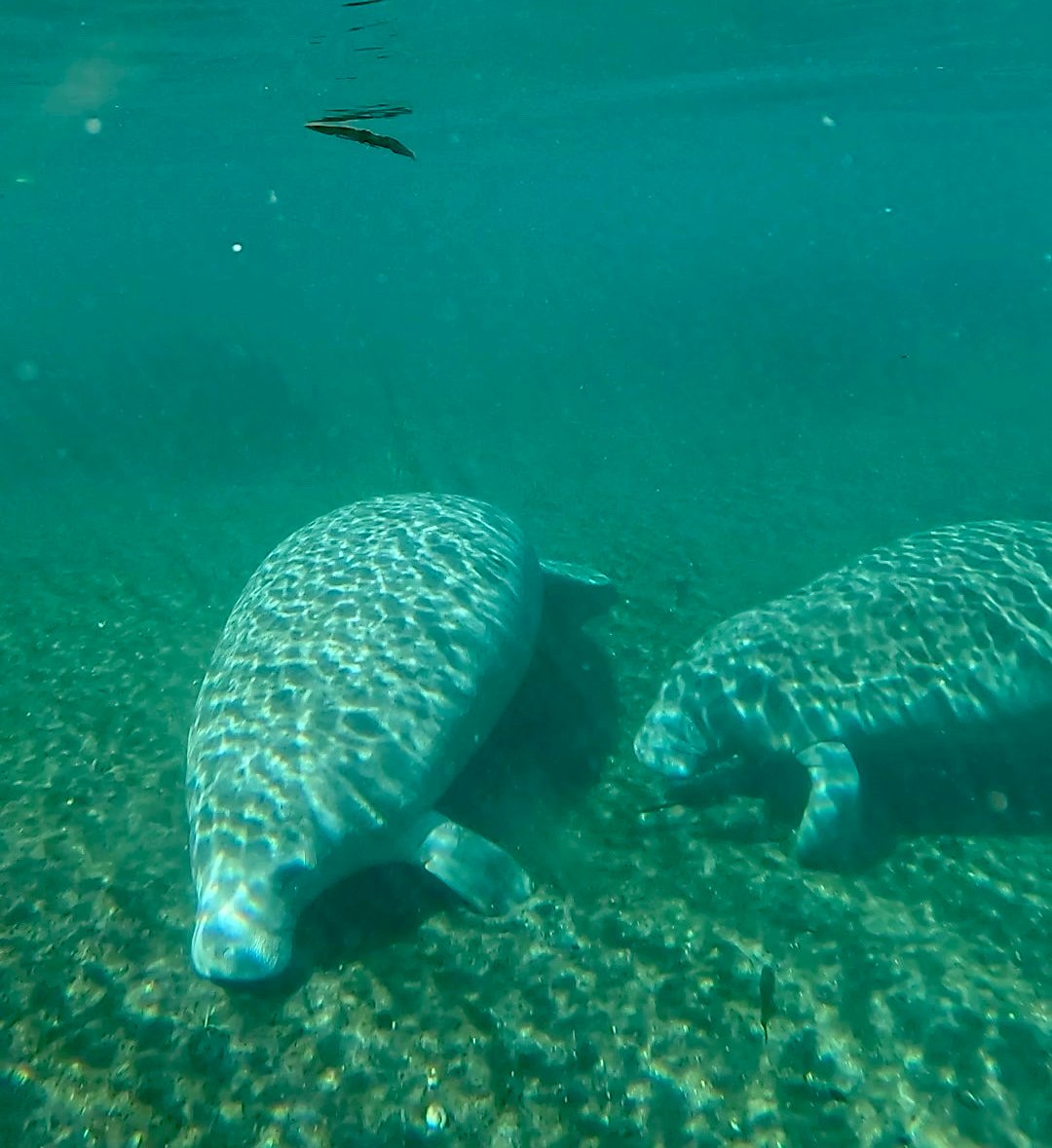
Affectionately called chubby mermaids, sea cows, or water potatoes, everyone delights in seeing a manatee. The optimal time to spot them in North Florida is during the winter, particularly at springs such as Ichetucknee Springs State Park, where the water remains a constant 72 degrees. It’s important to remember that manatees are protected by law; they should not be touched or chased. Observing from a safe distance ensures these endangered animals can thrive for generations to come.
Bird Species You Can Expect to See
Suwannee County boasts five locations on the Florida Birding Trail: Ichetucknee Springs State Park, Spirit of Suwannee Music Park, Suwannee River State Park, Twin Rivers State Forest, and Wes Skiles Peacock Springs State Park. Visitors to these parks can expect to see seasonal visitors such as the Carolina Chickadee and Yellow-throated Vireo in the spring and summer, as well as migrant songbirds like the Hooded Warbler and Northern Waterthrush. Whether you’re a novice or an experienced birdwatcher, birdwatching can be a relaxing and enjoyable activity for everyone.
Rare and Endemic Birds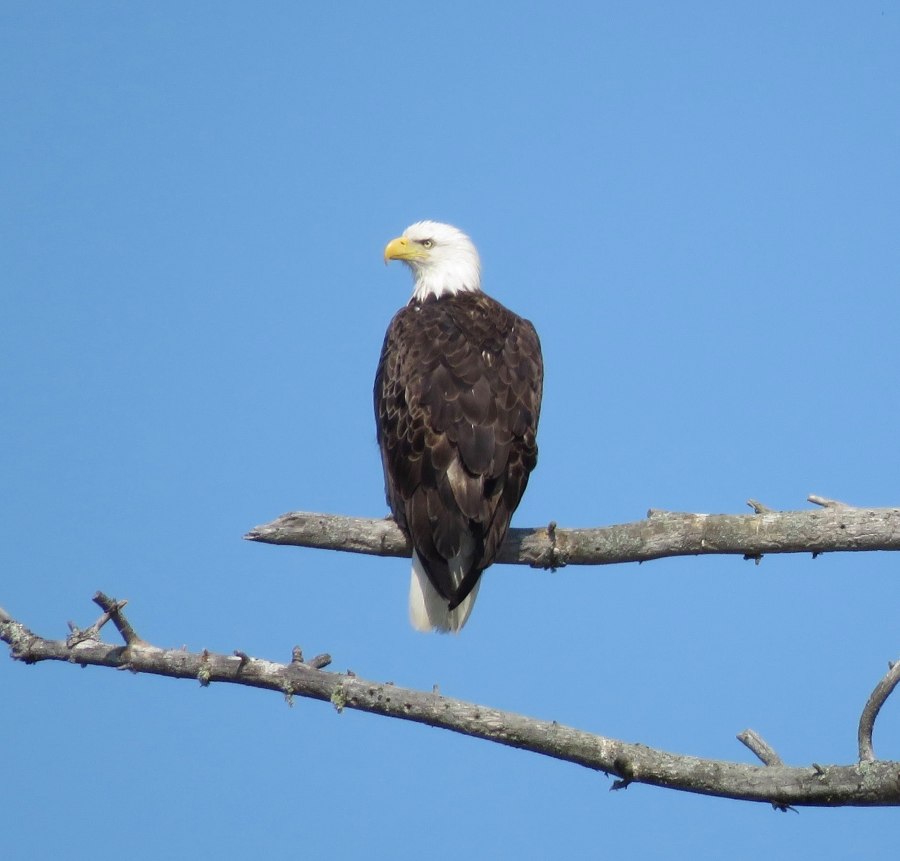
Rare birds in the area include the Bachman’s sparrow, bald eagle, and Swainson’s warbler.
– The Bachman’s Sparrow is small, approximately six inches in length, and typically inhabits grassy habitats. They are often seen singing while perched on low branches. They typically build their nests under shrubs, in grass, or among palmettos. For a greater chance of spotting this little bird, head to Ichetucknee Springs State Park.
– The bald eagle, symbolizing America, is a protected species often found near lakes, reservoirs, rivers, marshes, and coasts. They typically nest in tall trees, perched high above the forest floor — usually 180 feet or more. Your best chance to observe them is in flight or through a pair of binoculars.
– You’re more likely to hear the Swainson’s Warbler than to see it. This wood warbler prefers dense cover near swamps and river floodplain forests, spending most of its time on or near the ground.
Common Bird Species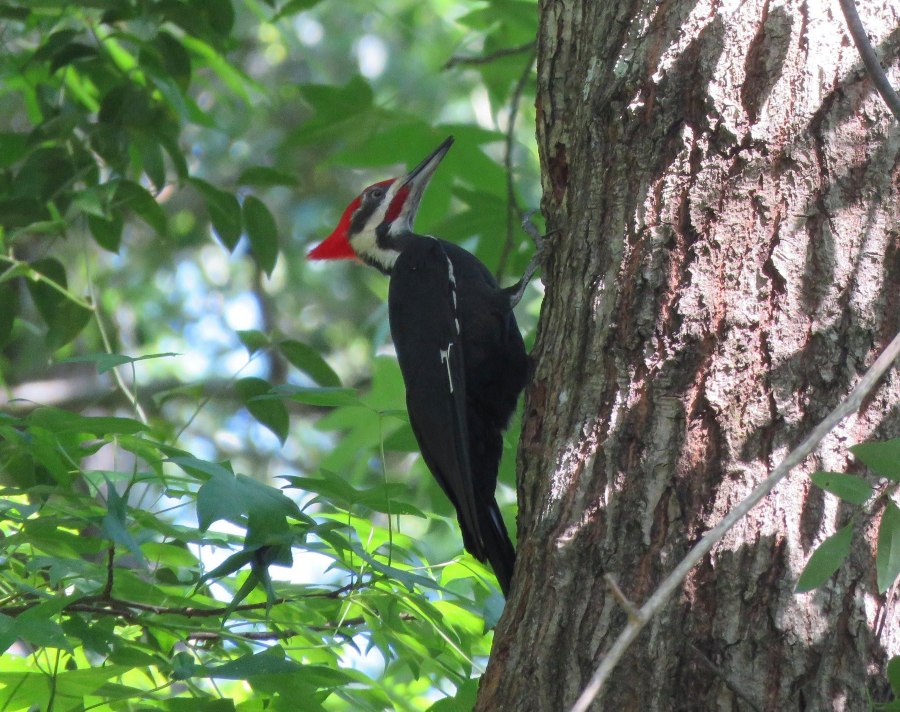
While some bird species may be harder to spot, the area is home to several common varieties including Pileated Woodpeckers, Mississippi Kites, Eastern Bluebirds, Barred Owls, egrets, Wood Ducks, Red-Tailed Hawks, and the American Kestrel.
– Pileated Woodpeckers, about the size of a crow at 17 inches, are identifiable by their signature red crest. They prefer habitats such as forests with large trees and have been observed at Wes Skiles Peacock Springs State Park.
– Mississippi Kites are hawk-like birds that nest primarily in tall trees adjacent to open country. They are often found in groves of trees along rivers or swamps and can be observed at the Spirit of the Suwannee Music Park.
– Eastern Bluebirds are the most widespread of the bluebird family, preferring habitats in open country with scattered trees and farms, making Suwannee County an ideal location for them.
– Barred Owls are abundant in the area and prefer woodland habitats.
– Egrets and herons thrive in places like Suwannee River State Park because these wading birds prefer habitats near bodies of water and are abundant throughout Florida.
– Red-tailed Hawks prefer woodlands and open country and nest in trees up to 120 feet above the ground.
Best Bird-Watching Places in Suwannee County
Situated along the Florida Birding Trail, Suwannee County is an excellent destination for bird watching. Thanks to Florida’s mild climate, birds can be spotted throughout the year, including migratory species during the winter months. Regardless of when you visit, you’re likely to encounter a variety of feathered creatures. For the best birdwatching experience, mornings are ideal as many birds are active then, particularly during feeding times.
Peacock Springs State Park
At Wes Skiles Peacock Springs State Park, you can observe wading birds near the springs or explore the nature interpretive trail — a 1.2-mile journey starting near the parking area. In addition to birding, butterfly viewing is also popular in this area. Expect to see Hackberry Emperor, Giant Swallowtail, Zebra Longwing, Texan Crescent, and Carolina Satyr.
Bird species: Swainson’s Thrush, Rose-breasted Grosbeak, Red-eyed Vireo, Hooded Warbler, Northern Waterthrush, Pileated Woodpecker, Brown Creeper, Golden-crowned Kinglet, Winter Wren, Mississippi and Swallow-tailed Kites, Yellow-billed Cuckoo, Acadian Flycatcher and White-eyed Vireo.
Location: 18081 185th Rd., Live Oak, FL 32060
Amenities: Restrooms, picnic pavilions, interpretive exhibit
Suwannee River State Park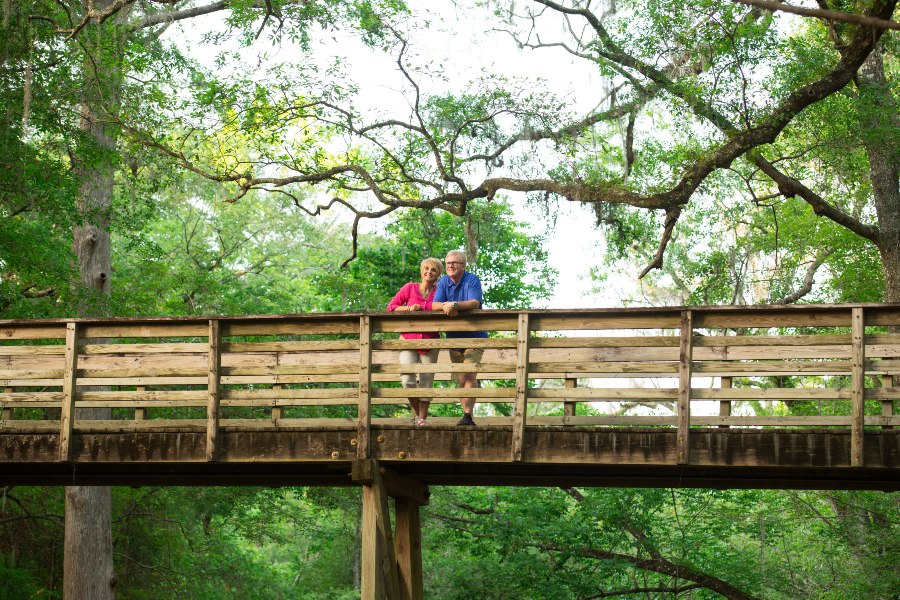
Suwannee River State Park, nestled in a blend of forest and river habitats and part of the Florida Birding Trail, offers excellent opportunities to observe herons, egrets, and barred owls year-round. During winter, you can also spot American Robins, Ruby-crowned Kinglets, and Rusty Blackbirds. The park hosts a diverse array of bird species, alongside 30 species of butterflies such as the Confused Cloudywing, Summer Azure, and Question Mark.
Bird species: herons, egrets, wood ducks, red-tailed hawks, red-shouldered hawks, woodpeckers, barred owls, warblers, vireos, wrens, swallows, and thrashers
Location: 3631 201st Path, Live Oak, FL 32060
Amenities: Bicycling, boating, camping, fishing, hiking, paddling, boat ramp, interpretive exhibit, playground, restrooms
Ichetucknee Springs State Park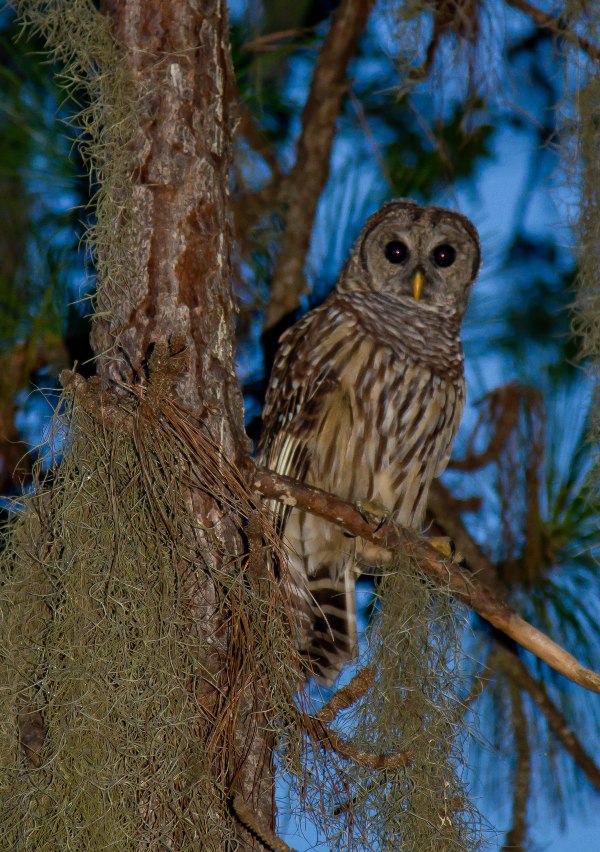
Ichetucknee Springs State Park is popular for swimming, scuba diving, snorkeling, and kayaking, and it’s also an excellent destination for birdwatching. The Trestle Point and Pine Ridge Nature Trails are ideal for spotting Southeastern American Kestrels, Wild Turkeys, and Bachman’s Sparrows. Throughout the park, you can observe Wood Ducks, Anhingas, Limpkins, Broad-winged Hawks, Mississippi Kites, and Prothonotary Warblers. Additionally, the park hosts over 50 species of butterflies.
Bird species: Southeastern American Kestrels, Wild Turkeys, Bachman’s Sparrows, Wood Ducks, Anhingas, Limpkins, Broad-winged Hawks, Mississippi Kites, Prothonotary Warblers. Northern bobwhite, barred owl, and red-headed woodpeckers
Location: 8294 SW Elim Church Rd, Fort White, FL 32038
Amenities: Geo-seeking, hiking, paddling, picnicking, scuba diving, swimming, tubing, canoe/kayak launch, full-service concession stand and restaurant, picnic pavilion, playground, shower facility, restrooms, and a visitor center
Spirit of the Suwannee Music Park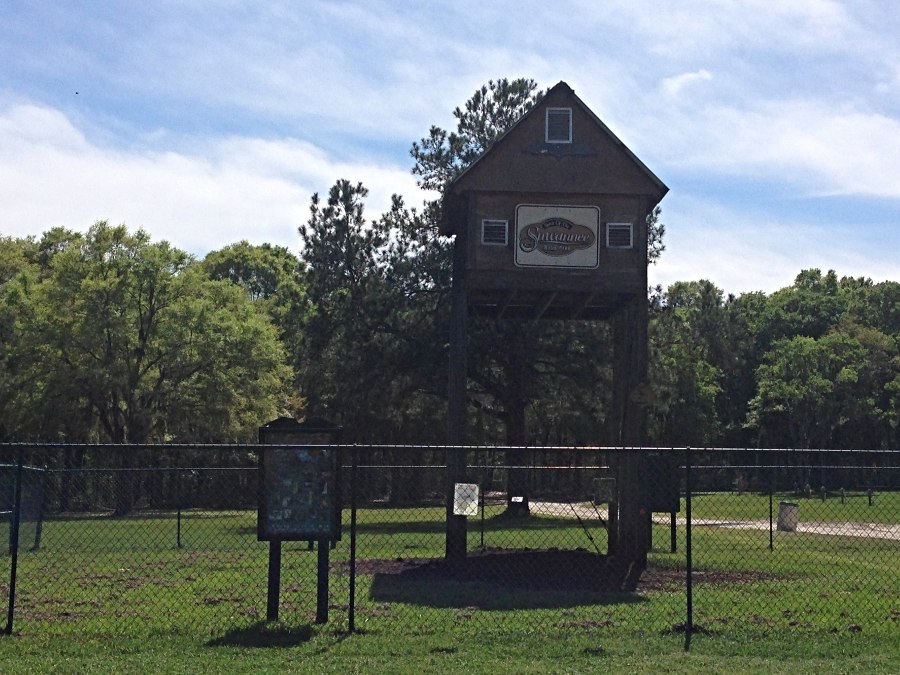
Known for its annual music festivals and camping opportunities, Spirit of the Suwannee Music Park is also a prime destination for birders as part of the Florida Birding Trail. The park features an on-site bat house and a designated bird sanctuary. According to the Florida Birding Trail website, the best birding area in the park is the scenic River Trail, where the observation deck at the trailhead offers excellent opportunities to spot Mississippi Kites.
Bird species: Mississippi Kites, Acadian Flycatchers, Yellow-throated Vireos, Northern Parulas, Carolina Chickadees, Eastern Bluebirds, Summer Tanagers, and Yellow-billed Cuckoos
Location: 3076 95th Dr., Live Oak, FL 32060
Amenities: Geocaching, golf cart rentals, game room, SOS cafe and restaurant, swimming, fishing, bicycling, bat house, and live music
Turtles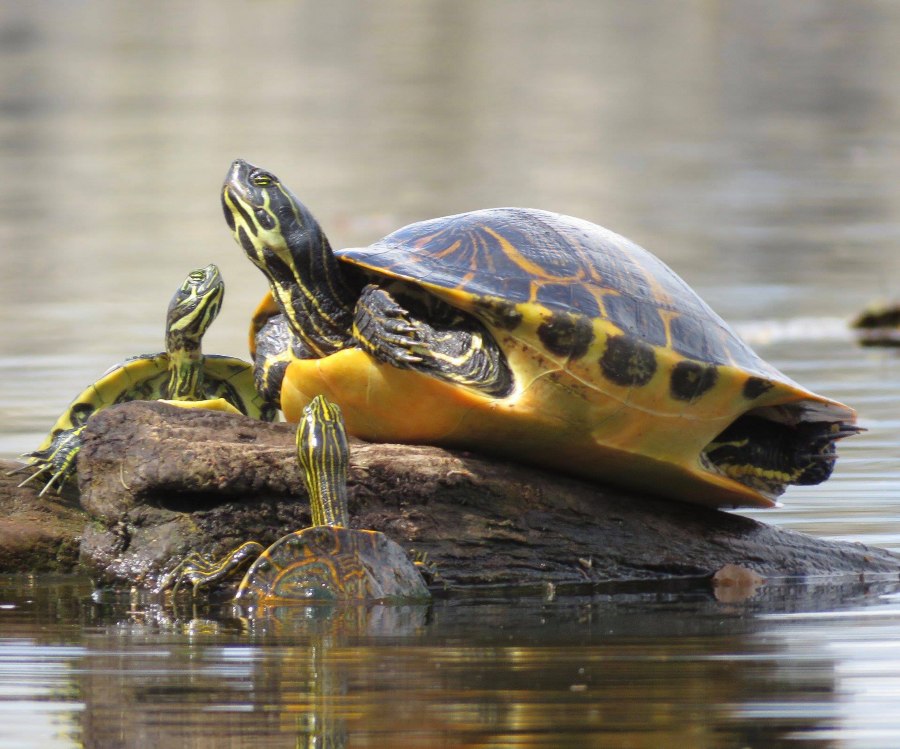
When swimming or kayaking along the Suwannee River or Ichetucknee, you’re bound to encounter turtles. These reptiles are often seen swimming in the water or sunbathing on logs near the springs or riverbanks.
Suwannee Cooter
The Suwannee Cooter can reach lengths of up to 17 inches and is recognized by its black shell with yellow markings and dark green and yellow striped skin. As an aquatic and imperiled species covered by Florida’s Imperiled Species Management Plan, it holds the distinction of being the largest cooter in the state. Found primarily near water bodies, you can expect to encounter these turtles along the Ichetucknee or Suwannee Rivers.
Suwannee Alligator Snapping Turtle
Exclusive to the Suwannee River basin spanning Georgia and Florida, the Suwannee alligator snapping turtle is distinguished by its wide, crescent-shaped notch at the rear of its shell. These turtles are primarily nocturnal and rarely venture out of water, making them more challenging to spot compared to the Suwannee Cooter. Classified as a threatened species by the U.S. Fish and Wildlife Service as of June 2024, they faced near extinction in the 1960s due to the popularity of turtle soup. Since 1992 in Georgia and 2009 in Florida, hunting these massive turtles — the males of which can grow up to 29 inches long and weigh up to 249 pounds — has been prohibited.
Alligators
People are often hesitant to visit Florida’s beautiful springs and rivers due to the presence of alligators, which inhabit all 67 counties of the state. However, in understanding more about these creatures you can take the necessary precautions to stay safe during any outing where alligators could be present. According to the Florida Fish and Wildlife Conservation Commission, it’s crucial to never feed an alligator, keep your distance if you see one, swim only in designated areas during daylight hours, and keep pets on a leash and away from the water.
Other Wildlife in Northern Florida
While manatees, deer, and a large variety of birds capture much of the attention for wildlife viewing in North Florida, especially in Suwannee County, they aren’t the only animals that can be spotted in the area.
Turkeys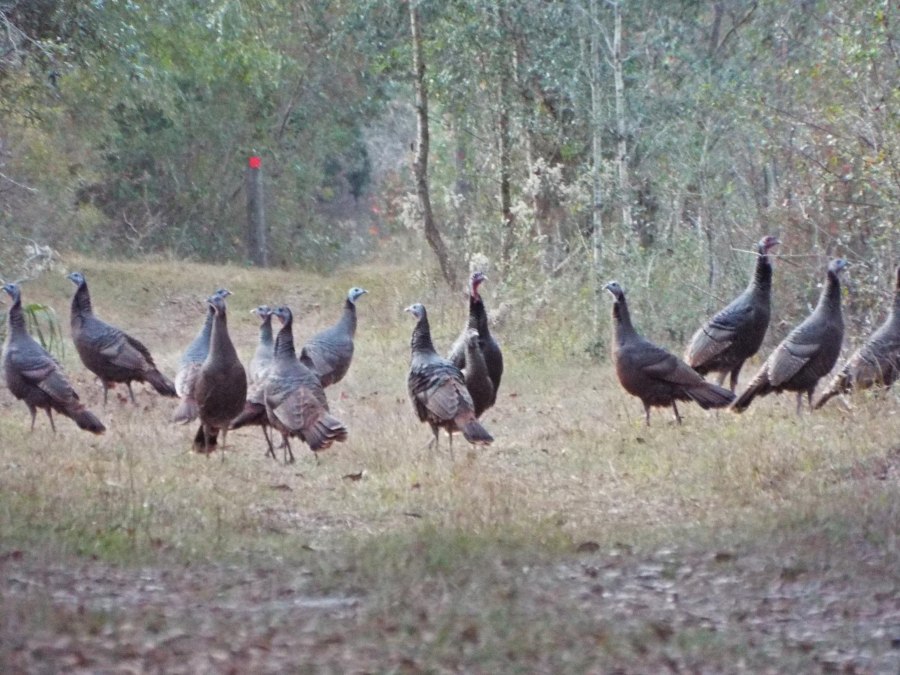
Florida hosts two subspecies of wild turkey: the eastern wild turkey and the Osceola or Florida wild turkey. These woodland birds favor open forests, forest edges, and clearings, and though they possess a wingspan of 4.1 to 4.8 feet and can fly short distances, they spend most of their time on the ground.
Rabbits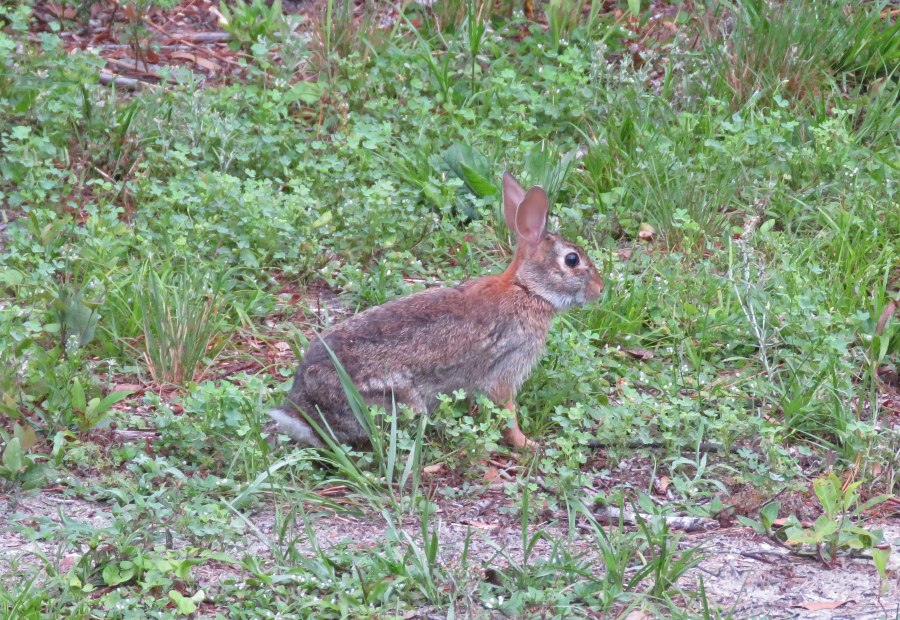
Similar to turkeys, Florida is home to two species of wild rabbits: the Eastern cottontail, recognized by its fluffy white tail, and the marsh rabbit, which, as its name implies, inhabits areas near fresh and brackish water. In addition to their distinct habitat preferences—the Eastern cottontail favors dense brush and forest edges, while the marsh rabbit prefers, well, marshy areas—they also differ in size, with the marsh rabbit being slightly smaller. They also vary in color, with the cottontail sporting a grayish-brown fur compared to the marsh rabbit’s darker, coarser brown coat
Otters
River otters, distinct from sea otters, which are found in coastal waters and oceans, inhabit the rivers and freshwater habitats throughout Florida, excluding the Keys. To glimpse a river otter in Suwannee County, visit Wes Skiles Peacock Springs or consider a kayaking adventure starting from the less crowded North End Launch of Ichetucknee.
Best Months for Wildlife Viewing in Suwannee County
Florida’s mild winters allow for wildlife viewing year-round, though certain months offer better opportunities depending on your interests. Winter, from December to March, is ideal for spotting migratory birds and manatees. In spring, you’ll find a greater variety of birds and butterflies. The area’s moderate climate ensures it remains just cool enough to attract seasonal visitors while remaining warm enough to sustain other wildlife throughout the year.
Wildlife Viewing Etiquette and Safety
Whether you’re paddling along the river, hiking through the trails, or enjoying a symphony of birdsong, it’s important to remember that you are a guest in their natural habitats. To ensure the preservation of their environments, respect for wildlife is key as they inhabited these areas long before us.
Don’t Disturb the Wildlife
When in nature, it’s crucial to maintain a safe distance and refrain from disturbing wildlife. Avoid touching, chasing, or harassing wild animals for your safety and theirs.
View from a Distance
The simplest way to protect wildlife is by maintaining a respectful distance. Bringing a pair of binoculars can enhance your experience while keeping both you and the wildlife safe.
Don’t Feed or Touch the Animals
Avoid feeding, touching, or disturbing the animals, and observe them from a safe distance. Feeding wild animals can have several negative consequences: it can lead to health issues due to disruptions in their specialized diets and cause behavioral changes as they become dependent on humans for food.
Minimize Noise While Wildlife Watching
It’s important to minimize noise when seeking wildlife encounters to avoid scaring them away. Reduced noise also enhances your ability to hear natural sounds like bird chirps or rustling branches, helping you locate animals more effectively.
Written by Hayli Zuccola
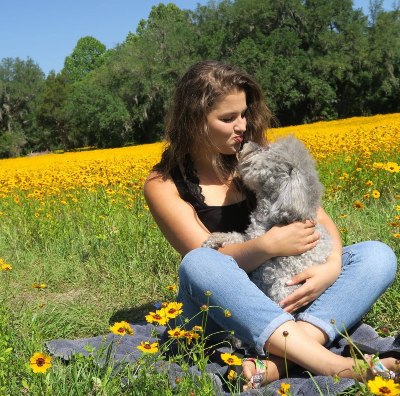
Hayli Zuccola has been a freelance writer for the last eight years for both digital and print publications across north central Florida. She enjoys traveling, finding the best food spots, and spending time with her pets. You can find her latest adventures on Instagram @hayztravels.